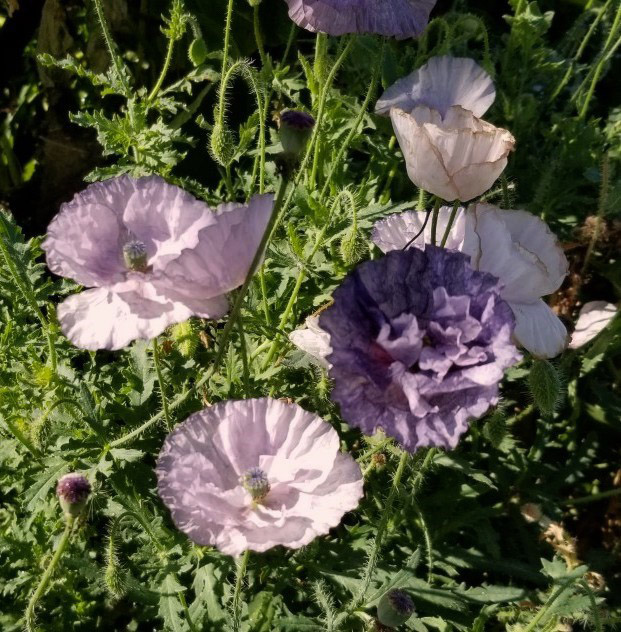by Erl Svendsen
The term ‘New Year resolution’ comes with a lot of baggage. Mostly, it’s because the typical resolution is too big and may require a change in behaviour (e.g. diet and exercise, write a novel). So, let’s just call them good ideas to aspire to so they seem less daunting and more achievable. Along that vein, my first ‘good idea’ for 2021 is to get my articles in on time.
Last year flew by but I managed to take the time to smell (and deadhead) the flowers and harvest my ridiculously large, many-coloured carrot patch – I still have many pounds to go, even after sharing about a third with friends, family and neighbours. I’ve never had such a crop of carrots, but that’s probably thanks to sticking to one of my good ideas from last year: spend more time taking care of my veggie garden, especially with regards to watering.
Another good idea I had last year was to plant something new. Last February, I fell in love with a picture of ‘Amazing Grey’ Shirley poppies with their delicate, single and semi-double ruffled flowers in storm-cloud colours: slate-blue, purple, lavender, and light grey. I had to have them. I sprinkled the dust-like seed directly on the ground and covered with a very thin layer of soil in May. After a few weeks, lime green seedlings emerged (I almost weeded them out) that by July were in full flower. In addition to attracting pollinators, quite a number of my fellow community gardeners remarked on them and asked if they could take a few seed pods to grow in their own garden. My new plant for 2021 is going to be another poppy, this time ‘Giant Rattle’ breadseed poppy sporting large golf ball-sized pods.
Another common gardener’s good idea is to visit other people’s gardens for inspiration (and to maybe convince the owner to share a cutting or division of something that catches your eye). Last year that was a challenge to do in person, but there are other ways to visit a garden. For example, The Gardener for Canadian Climates (formerly The Saskatchewan Gardener) often features beautiful gardens and their caretakers. And virtual garden tours of backyards to Botanic Gardens abound on the interweb (just ask Mr. Google for suggestions).
Maybe this is the year you start a compost pile to take care of your yard and kitchen scraps. The Saskatchewan Waste Reduction Council (www.saskwastereduction.ca/recycle/resources/composting/) is an incredible resource with information and videos to help you get started, choosing the right style, and finding a ‘compost coach’ for a bit of one-on-one advice. If composting is not your thing but still want to divert your green waste from the landfill, consider dropping it off a municipal composting depot or signing up for the green bin program in your community.
As a final good idea for 2021, inspect your tools. Sharpen your spades, hoes and pruning equipment. Replace splintering handles and dull, impossible to sharpen blades. If a tool is completely useless, replace it with a ‘tool-for-life’ model. This is not a brand but rather a tool that is made from durable materials (e.g. one-piece cast metal trowel), is well designed (ergonomic) and comes highly recommended by your gardening friends. A lifetime guarantee is often a sign of quality. Even though a tool-for-life may seem expensive at first, you save money in the medium term as your not replacing it (unless your neighbour ‘borrows’ it).
Erl gardens in Saskatoon and tweets about on occasion @ErlSv
This column is provided courtesy of the Saskatchewan Perennial Society (SPS; saskperennial@hotmail.com ). Check our website saskperennial.ca) or Facebook page (facebook.com/saskperennial). All Saskatchewan Perennial Society events are on hold until further notice.


